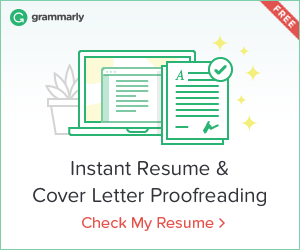So, you’ve got a fantastic idea for an app. In fact, it’s so great that it will revolutionise the industry and make you or your business bucket loads of money. But here’s the catch – how do you convince potential investors and partners to get on board? And how do you make sure developers will create exactly the app you’re looking for? The answer is simple: write a clear brief. To help you out, we’ve put together the points you’ll need to cover.

1. The big idea – begin with the end mind
You should be able to describe your idea in a nutshell – what it is, what it does, and why it exists. Ask yourself basic questions. What will the app be used for? Why does your business need it? Are you going to use it to sell products, promote your brand, or increase your audience loyalty? Is it content driven or task driven? Is it a new idea?
For inspiration, look into apps that already exist in your industry. Don’t be afraid to list what you like and don’t like about them. While there might be similarities, this will help you identify the parts of your app that are different and unique
Top Tip: Want to know if your app name is available to trademark? You can check this using the Australian Trade Mark Search website.
2. Who are the end users?
To help development teams and investors understand the use of your app, it’s important to identify who the end users are, how they make decisions, and what influences their choices. For example, will they be using the app out and about? Lounging around at home? Shopping at their local supermarket, or while they’re travelling overseas? You get the point.
Defining these scenarios will help feed the architectural blueprint and wireframe phase of the development process, and give your investors a solid idea of who will benefit from the app. Remember to clarify the type of experience you’re aiming for too – will using the app be fun, informative, efficiency-focused, or something else?
Top Tip: Don’t be bashful. Bounce your ideas around with people who can influence the direction of your mobile towards being successful. Potential customers, marketers or salespeople can be very helpful refining concepts.
3. Be Familiar with the Differences in Mobile Platforms
What kind of app will you need – native (IOS, Android or both) or cross-platform? If your app needs high usability and performance rates, then it’s best to go with native mobile development. On the other hand, if your goal is to launch the app as soon as possible with limited functionality, you should choose cross-platform. Got doubts? You can always get advice from your development partner or a technology expert before fleshing out this point in the brief. In choosing a compatible platform, you’ll also need to consider demographics, user experience, and target audiences.
Top Tip: Your developer will help you to understand your platform options just be familiar with the different options available to you throughout consideration.
4. Define the look and design specs
This is the fun part. Work with a designer, or do it yourself, to come up with a visual identity that reflects the users and your business. In your discussions, choose some examples of apps that showcase your vision and discuss what you like and don’t like about them. This will help them get a clear idea of your vision and expectations. Keep in mind you should never make stylistic decisions based on your personal taste. User experience should always come first, and the look and feel should derive from this.
When it comes to writing about the app design details, think about the type of pages you want and how many you need. Will there be buttons, icons and menus? In your brief, show sketches and potential screen layouts, focusing on the practicality of the features – not the nitty gritty. While all this info relates to front-end details, don’t forget about the back-end too. Provide information on whether the app will need to interact with a website or live database, what the communication protocol is (REST, SOAP, XML, etc) and if you’ll need the app to work offline.
Top Tip: Your ideas will begin to evolve really quickly by this point. What you thought was possible in your mind becomes more clear it needs to change to suit functionality over design. Look around at how other apps have used design to suit functionality and be inspired.
5. Content and functionality
The functionality of your app can make or break it. So think deeply about the features you’ll need: push notifications, payment integration software, geolocation acceptance, contact forms, social media integration, etc. You should also define what type of content you’d like to add in, such as video, animation, audio, image and documents. How will you source this content and will you create it yourself or outsource the work?
Top Tip: Create a storyboard of screenshots of how you think users will navigate your app. Ask people within your network to take a look at the app without any instructions from you. The reality is you won’t be there to instruct your future customers so it’s a good time to get the feedback now.
6. Target audience and tone
When it comes down to it, this point should tie in seamlessly with many of the above points. In your brief, make sure you include information on what market you’re focusing on, any research you have on the targeted age range of potential users, the locations you’re targeting, and who your competitors are. To flesh out information on the app’s objectives, think about the overall message you’re trying to convey to your audience, the tone you want to use, and how you’ll measure your success.
A well-written and detailed brief will help bridge the gap between your vision and your investors’ belief in and contribution to this vision.
Top Tip: And while you can definitely use these tips as guiding points on writing your next mobile app brief, don’t be afraid to experiment and find other ways to convey your ideas too.

.png)






















